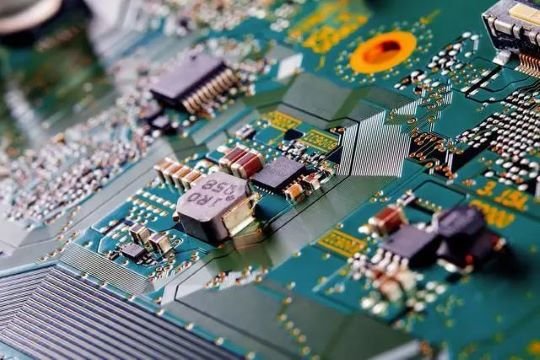Online Test (ICT)
ICT, that is, automatic online test, is a must-have test equipment for modern PCB manufacturers, and it is very powerful. It mainly detects open circuits, short circuits, and failures of all parts of the PCBA by contacting the test probes with the test points of the PCB layout, and clearly informs the staff.
ICT has a wide range of applications, high measurement accuracy, and clear instructions for detected problems. It is very easy for workers with average electronic skills to deal with problematic PCBAs. The use of ICT can greatly improve production efficiency and reduce production costs.
2. Flying probe test
Flying probe testing and in-circuit test (ICT) are both well-established and effective forms of testing, and both are effective in finding production quality issues, but flying probe testing has proven to be an especially cost-effective method of raising board standards .
Contrary to traditional testing methods where test probes are fixed in place, flying probe testing uses two or more independent probes that operate without fixed test points. These probes are electromechanically controlled and move according to specific software instructions. Therefore, the initial cost of flying probe testing is low, and it can be done by modifying the software without changing the fixed structure. In contrast, the initial fixture cost of ICT is higher, so for small batch orders, flying probe test is cheaper, but ICT is faster and less error-prone than flying probe test, so for large batch orders , or ICT is more cost-effective.
3. Functional testing
Functional system test uses special test equipment in the middle and end of the production line to conduct a comprehensive test on the functional modules of the circuit board to confirm the quality of the circuit board. Functional testing mainly includes final product testing (Final Product Test) and the latest physical model (Hot Mock-up).
Functional testing typically does not provide in-depth data (e.g., pin location and component-level diagnostics) to improve the process, but instead requires specialized equipment and specially designed test procedures. Writing a functional test program is complex and therefore not suitable for most circuit board production lines.

4. Automated Optical Inspection (AOI)
AOI uses a single 2D camera or two 3D cameras to take pictures of the PCB, and then compares the board photo with the detailed schematic. If the board does not match the schematic to a certain extent, the place where the board does not match will be flagged for inspection by a technician, and AOI can detect the fault problem in time.
However, AOI testing will not supply power to the circuit board, and cannot detect 100% problems with all components. Therefore, AOI is generally used in combination with other testing methods. Commonly used testing combinations are:
AOI and flying probe
AOI and In-Circuit Test (ICT)
AOI and functional testing
5. X-ray test
X-ray testing, that is, X-ray inspection, uses low-energy X-rays to quickly detect problems such as circuit board open circuit, short circuit, empty soldering, and missing soldering.
X-ray is mainly used to detect ultra-fine-pitch and ultra-high-density defective circuit boards, as well as defects such as bridging, missing chips, and dislocations generated during assembly. It can also use tomography to detect internal defects in IC chips. This is the only way to test the quality of the ball grid array and solder ball bonding. The main advantage is to check BGA solder quality and embedded components without spending on fixtures.

6. Laser detection
This is the latest development in pcb testing technology. It scans the printed board with a laser beam, collects all measurement data, and compares the actual measurement with preset acceptance limits. The technique has been proven on bare boards and is being considered for assembled board testing. This speed is enough for mass production line. Fast output, no fixture, and unobstructed vision are its main advantages; high initial cost, maintenance and use problems are its main disadvantages.
7. Aging test
Aging test refers to the process of simulating various factors involved in the actual use conditions of the product to carry out corresponding condition strengthening experiments on the aging of the product. The purpose is to test the stability and reliability of the product in a specific environment.
According to the design requirements, place the product under specific temperature and humidity conditions, continue to simulate the work for 72 hours to 7 days, record the performance data, reverse the production process and improve it, so as to ensure that its performance meets market demand. . Aging tests usually refer to electrical performance tests, and similar tests include drop tests, vibration tests, and salt spray tests.
In addition to the above 7 tests, based on product requirements, other test methods will be used to further ensure PCB quality. as follows:
8. Solderability testing: Ensures a solid surface and increases the chances of a reliable solder joint
9. PCB Contamination Test: Detects large amounts of ions that can contaminate circuit boards, causing corrosion and other problems
10. Microsection analysis: investigation of defects, opens, shorts and other failures
11. Time domain reflectometer (TDR): find the fault of high frequency board
12. Peel Test: Find out the strength measurement needed to peel the laminate from the board
13. Solder float test: determine the level of thermal stress that PCB holes can resist